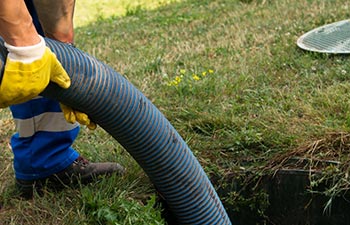
Did you know that your septic tank is one of the largest and most critical systems in your household? Though its components are buried underground and out of sight, that doesn’t mean you can ignore your septic system. In fact, knowing exactly what goes on inside pipes, drain lines and septic tank can help you appreciate your system as well as understand when it needs attention.
The Septic System Process
Septic systems are common in places that don’t have access to centralized sewer systems. Your septic tank acts as your own personal wastewater treatment structure that is located underground on your property. Your septic system offers both natural and technical methods in treating the household wastewater that comes from your house, including that from laundry, kitchen drains and bathrooms. A septic system consists of more than just your tank; it also includes pipes and drain lines as well as a drain field (soil absorption field) nearby.
The pressure applied through pumping enables the effluent of the septic tank to trickle into the drain field. Some septic systems are designed in such a way that wastewater can be disinfected before discharging it to the soil.
While there are different types of septic systems, the most conventional septic systems work in the following steps:
- Wastewater leaves your household from a main drainage pipe and flows into the septic tank.
- The septic tank holds the wastewater until the solids settle down and separate into sludge and scum.
- The compartments of the tank prevent both layers from spreading into the drain area.
- The T-shaped outlet of the tank allows the liquid wastewater to drain into the soil absorption field, an area of nearby land that is shallow and made of unsaturated soil.
- The soil receives and treats the wastewater. As the wastewater seeps through the soil, the harmful bacteria is naturally removed.
- The drain field disperses and discharges the treated water into the groundwater.
Understanding What Your System Needs from You
Knowing the above steps can help you understand the importance of caring for your drain field, flushing only wastewater down your drains as well as the scheduling your routine septic tank pumping. The layer of sludge that accumulates in the tank when the solids are separated from the liquid wastewater needs to be manually pumped out or removed. Most tanks can function effectively for 3 to 5 years before this layer of solid sludge begins to compromise the septic system. If a septic tank pumping is ignored or delayed at this time, you may experience backups in your home or business and costly septic repairs.
To learn more about your septic system operation or to schedule your next septic tank pumping, call the experts of Metro Septic in Cartersville.

